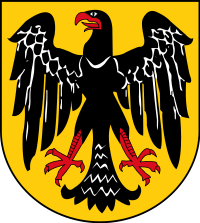
The Weimar Republic ( Weimarer Republik (help·info), IPA: [ˈvaɪmaʁɐ ʁepuˈbliːk]) is the name given by historians to the parliamentary republic established in 1919 in Germany to replace the imperial form of government. It was named after Weimar, the city where the constitutional assembly took place. Its official name was Deutsches Reich (sometimes translated as German Empire, but Reich can also mean realm or federal level of government), however, and it was usually known in English simply as Germany. Following World War I, the republic emerged from the German Revolution in November 1918. In 1919, a national assembly convened in Weimar, where a new constitution for the German Reich was written. It was adopted on 11 August. Germany's period of liberal democracy lapsed in the early 1930s, leading to the ascent of the NSDAP and Adolf Hitler in 1933. Although the constitution of 1919 was never officially repealed, the legal measures taken by the Nazi government in February and March 1933, commonly known as Gleichschaltung ("coordination") meant that the government could legislate contrary to the constitution. The constitution became irrelevant; thus, 1933 is usually seen as the end of the Weimar Republic and the beginning of Hitler's "Third Reich".
In its 14 years, the Weimar Republic was faced with numerous problems, including hyperinflation, political extremists on the left and the right and their paramilitaries, and hostility from the victors of the First World War. However, it overcame many discriminatory regulations of the Treaty of Versailles, reformed the currency, unified tax politics and the railway system.
By: Alaincoins